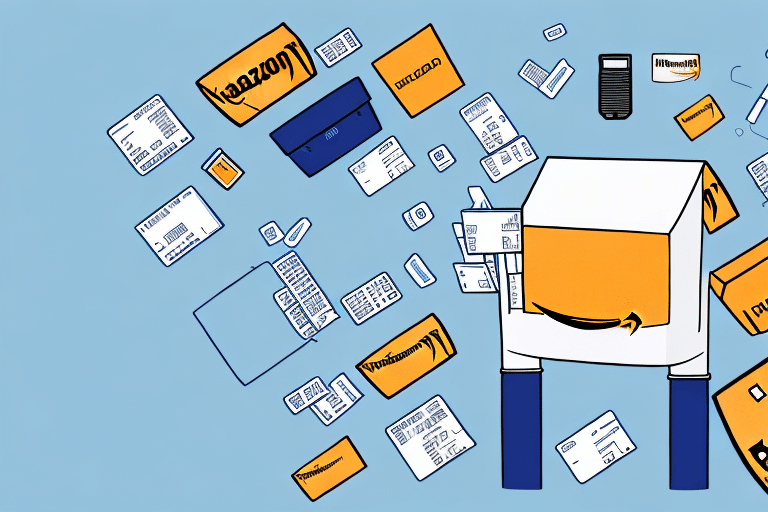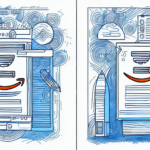Understanding Amazon Seller Accounts and Fees
Before diving into the costs of selling on Amazon, it's essential to understand the different types of seller accounts available and the fee structures associated with each. Choosing the right account type can significantly impact your profitability and overall selling experience.
Seller Account Types
Amazon offers three primary types of seller accounts:
- Individual Seller Account: Ideal for those who plan to sell fewer than 40 items per month. This account does not have a monthly subscription fee but charges a fee for each item sold.
- Professional Seller Account: Suited for sellers who plan to sell more than 40 items per month. This account includes a monthly subscription fee but does not charge per-item fees, making it more cost-effective for high-volume sellers.
- Enterprise Seller Account: Designed for large businesses with high sales volumes and complex needs, such as custom integrations and dedicated account management support from Amazon.
Amazon Fees Overview
Amazon's fee structure can be categorized into several types:
- Referral Fees: A percentage of each sale, varying by product category. For example, electronics typically have a 6% referral fee, while clothing may have a 17% fee.
- Fulfillment Fees: Costs associated with storing, picking, packing, and shipping your products, especially if you use Fulfillment by Amazon (FBA).
- Subscription Fees: Monthly fees for Professional and Enterprise accounts.
- Additional Fees: These may include high-volume listing fees, rental book service fees, and fees for optional services like advertising.
For a detailed breakdown of Amazon’s fees, refer to Amazon’s official Fee Schedule.
Product Sourcing, Inventory, and Fulfillment
Effective product sourcing and inventory management are crucial for minimizing costs and maximizing profits. Additionally, understanding fulfillment options can help streamline your operations.
Product Sourcing Costs
The cost of goods (COGS) is a fundamental component of your total costs. This includes the price paid to suppliers, shipping costs, and any import duties or taxes. Sourcing products at competitive prices without compromising quality is key to maintaining healthy profit margins.
Inventory Management
Managing inventory involves costs related to storage, handling, and potential losses from unsold stock. Utilizing Amazon's FBA service can simplify inventory management but comes with its own set of fees. It's essential to maintain optimal inventory levels to prevent stockouts or overstocking.
Shipping & Fulfillment Costs
Shipping costs vary based on product size, weight, and destination. Amazon's FBA service can reduce shipping complexities by handling storage and delivery, but fees depend on the size and weight of your products. Alternatively, Fulfillment by Merchant (FBM) allows you to manage shipping yourself, offering more control but requiring efficient logistics to keep costs low.
For more on fulfillment options, visit Amazon’s FBA Benefits page.
Advertising, Marketing, and Pricing Strategies
Strategic advertising and effective pricing are pivotal in driving sales and staying competitive on Amazon.
Amazon Advertising Options
Amazon offers various advertising solutions, including Sponsored Products, Sponsored Brands, and Sponsored Display ads. These tools help increase product visibility and drive targeted traffic to your listings.
- Sponsored Products: Pay-per-click ads that promote individual product listings in search results and product pages.
- Sponsored Brands: Feature your brand logo, a custom headline, and multiple products in search results.
- Sponsored Display: Target relevant audiences both on and off Amazon based on shopping behaviors.
Learn more about Amazon’s advertising options on their Advertising page.
Budgeting and Competition
Effective budgeting for advertising requires understanding your competition and setting realistic goals. Analyzing competitor strategies and market demand can help allocate your advertising budget efficiently.
Pricing Strategies
Implementing the right pricing strategy can influence your sales performance:
- Competitive Pricing: Setting prices based on competitors to attract price-sensitive customers.
- Value-Based Pricing: Pricing products based on the perceived value to the customer, allowing for higher margins.
- Dynamic Pricing: Adjusting prices in real-time based on market demand, inventory levels, and competitor pricing.
Consider using tools like Sellics or Jungle Scout for dynamic pricing and competitor analysis.
Tools and Resources for Managing Your Amazon Business
Utilizing the right tools can streamline your operations, enhance productivity, and provide valuable insights into your business performance.
Amazon FBA
Fulfillment by Amazon (FBA) allows sellers to store products in Amazon's fulfillment centers, where Amazon handles packing, shipping, customer service, and returns. This can save time and provide access to Amazon Prime customers but comes with associated fees.
Explore more about FBA on Amazon’s FBA Benefits page.
Amazon Seller Central Dashboard
The Seller Central Dashboard is your hub for managing sales, tracking performance metrics, handling inventory, and accessing Amazon’s suite of seller tools. Regularly monitoring your dashboard helps in making informed business decisions.
Third-Party Tools and Resources
Several third-party tools can enhance your Amazon selling experience:
- Inventory Management: Tools like Inventory Source help automate inventory updates and synchronization.
- Analytics and Reporting: Platforms such as George provide in-depth analytics to track sales performance and customer behavior.
- Keyword Research: Tools like Ahrefs and Moz assist in optimizing your product listings for better search visibility.
Integrating these tools can provide a competitive edge and streamline various aspects of your Amazon business.
Calculating the Costs of Product Sourcing and Inventory Management
Product sourcing and inventory management are critical components that influence your overall costs and profitability. Understanding these costs ensures that you price your products effectively and maintain healthy profit margins.
Cost of Goods
The Cost of Goods Sold (COGS) includes the price paid to suppliers, shipping fees, customs duties, and any other costs involved in bringing your product to market. Negotiating favorable terms with suppliers and buying in bulk can help reduce COGS.
Shipping and Handling
Shipping and handling fees vary based on the product's size, weight, and destination. Efficient logistics planning and utilizing services like Amazon’s FBA can help manage these costs effectively.
Inventory Storage
Storage fees depend on the volume and duration of your inventory held in Amazon’s warehouses. Keeping a balanced inventory level prevents high storage fees and mitigates the risk of stockouts.
Returns and Restocking
Handling returns incurs additional costs, including shipping fees, restocking fees, and the potential loss of unsellable products. Establishing a clear return policy and maintaining product quality can minimize these costs.
How to Minimize Your Costs and Maximize Your Profits on Amazon
Optimizing your operations and leveraging Amazon’s services can help reduce costs and increase profitability.
Utilize Fulfillment by Amazon (FBA)
FBA can reduce fulfillment costs by streamlining storage, shipping, and customer service. It also makes your products eligible for Amazon Prime, attracting more customers. However, it's essential to monitor FBA fees to ensure they align with your profit margins.
Optimize Listings and Pricing Strategies
Effective product listings with optimized keywords improve search visibility and attract more buyers. Additionally, employing smart pricing strategies, such as dynamic pricing, can help stay competitive while maximizing profits.
Monitor and Adjust Advertising Campaigns
Regularly analyzing the performance of your advertising campaigns allows you to allocate your budget more efficiently and eliminate underperforming ads, ensuring your marketing spend contributes positively to your bottom line.
Tips for Setting the Right Price for Your Amazon Products
Pricing your products correctly is crucial for attracting customers and ensuring profitability. Here are key considerations for setting the right price:
Understand Your Costs
Ensure that your pricing covers all costs, including COGS, Amazon fees, shipping, and advertising expenses. This guarantees that each sale contributes to your profit margin.
Analyze Competitors
Research your competitors’ pricing to understand the market landscape. Competitive pricing can make your products more attractive, but ensure it doesn’t erode your profit margins.
Factor in Perceived Value
Products that offer unique features or higher quality can justify higher prices. Highlighting the value proposition in your listings can support premium pricing strategies.
Use Pricing Tools
Leverage pricing tools like RepricerExpress or Brightpearl to automate pricing adjustments based on market conditions and sales performance.
The Importance of Factoring in Shipping and Fulfillment Costs
Shipping and fulfillment costs can significantly impact your profitability. Proper management of these costs ensures that you maintain healthy margins while providing efficient delivery to customers.
Choosing the Right Fulfillment Method
Opting for FBA can streamline the fulfillment process but comes with storage and fulfillment fees. Alternatively, FBM gives you more control over shipping but requires efficient logistics management.
Calculating Shipping Costs
Accurately calculating shipping costs based on product dimensions, weight, and delivery destinations helps in setting appropriate prices and avoiding unexpected expenses.
Offering Free Shipping
While offering free shipping can attract more customers, it's essential to incorporate shipping costs into your product pricing to maintain profitability. Alternatively, setting a minimum purchase threshold for free shipping can offset costs.
How to Budget for Advertising and Marketing on Amazon
Effective budgeting for advertising and marketing is essential for driving sales and increasing product visibility on Amazon.
Determine Your Advertising Goals
Define clear objectives, such as increasing brand awareness, boosting sales for specific products, or entering new markets. Your goals will guide your advertising strategy and budget allocation.
Allocate a Percentage of Revenue
A common approach is to allocate between 10-20% of your revenue to advertising. Adjust this percentage based on your business goals and competitive landscape.
Monitor and Adjust Campaigns
Regularly review the performance of your advertising campaigns. Use metrics like Return on Ad Spend (ROAS) to evaluate effectiveness and make informed adjustments to optimize your budget.
Utilize Amazon’s Advertising Tools
Leverage Amazon’s advertising platforms to target specific customer segments and optimize your ad spend. Tools like Amazon Advertising Console provide insights and automation features to enhance campaign performance.
Top Tools and Resources to Help You Manage Your Amazon Selling Costs
Utilizing the right tools can significantly optimize your selling process, reduce costs, and increase efficiency.
Inventory Management Tools
Tools like Inventory Source automate inventory updates and synchronization, helping you maintain optimal stock levels and reduce storage costs.
Analytics and Reporting Tools
Platforms such as Sellics and Jungle Scout provide in-depth analytics and reporting, offering insights into sales performance, customer behavior, and market trends.
Keyword Research Tools
Optimizing your product listings with effective keywords enhances visibility. Tools like Ahrefs and Moz assist in identifying high-performing keywords to improve your search rankings.
Pricing Optimization Tools
Dynamic pricing tools like RepricerExpress help automate price adjustments based on market conditions, ensuring competitive pricing while maintaining profitability.
By leveraging these tools and resources, you can efficiently manage your Amazon selling costs, optimize operations, and enhance your overall business performance.
Conclusion
Becoming an Amazon seller involves understanding various costs and strategically managing them to ensure profitability. By selecting the right seller account, effectively managing fees, optimizing product sourcing and inventory, implementing smart pricing strategies, and utilizing essential tools and resources, you can build a successful and sustainable Amazon business.
For more detailed information, refer to Amazon’s official Seller Central resources and stay updated with the latest industry trends and best practices.






















